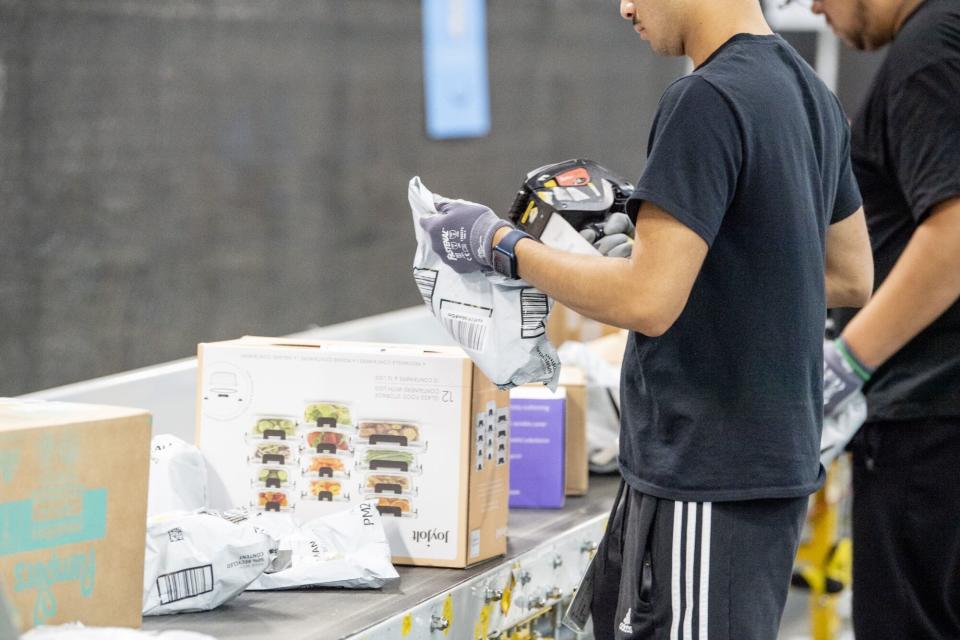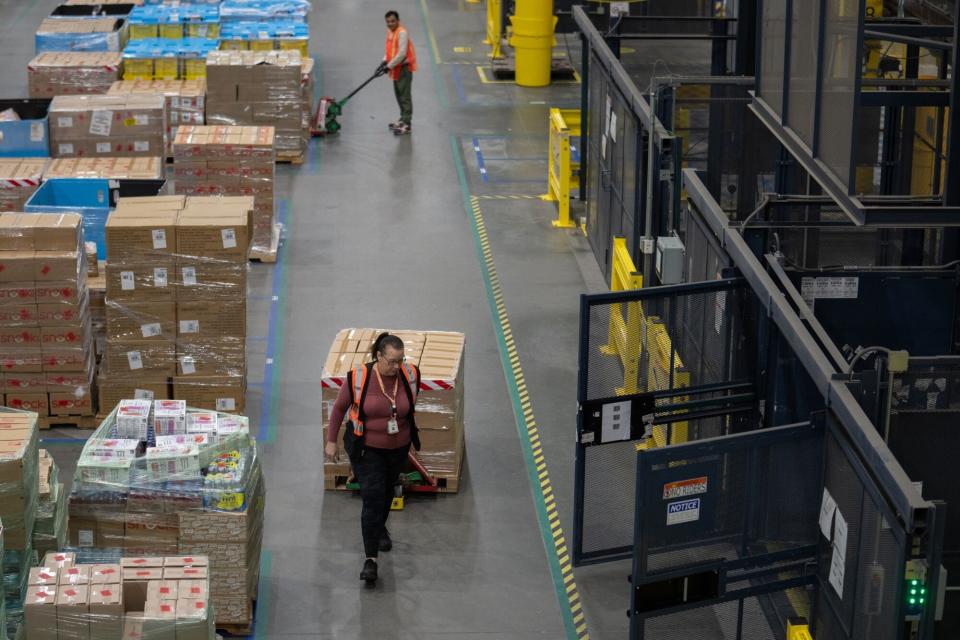Amazon’s New Fees on Sellers Likened to 'Kick in the Gut'
(Bloomberg) -- Amazon.com Inc. merchants have found themselves caught in an economic vice.
Most Read from Bloomberg
Trump Vows ‘Day One’ Executive Order Targeting Offshore Wind
Macron Puts French Banks in Play With Plan to Transform Europe
Tesla Rehires Some Supercharger Workers Weeks After Musk’s Cuts
Five Under-the-Radar Billionaires Making Vast Fortunes in Modi's India
Earlier this year, the e-commerce giant rolled out changes to the fees its charges them — essentially shifting more of its operating costs onto the small businesses that account for most of the products sold on the site. Making matters worse for merchants, shoppers are trading down.
In the first four months of the year, American consumers have increasingly opted for the least expensive products in nearly all categories, according to a report released Thursday by Adobe Inc. That makes it harder to pass price hikes along to shoppers, and online merchants are struggling to make money.
Duncan Freer, who sells weighted blankets and sleep masks on Amazon, expects his profit margin to slide to 8% from 20% as a result of the new fees. One, imposed in March, charges a levy on shipments sent to the company’s fulfillment centers. That will drive the cost of shipping two pallets of Freer’s products to Amazon to more than $800, up four-fold from what it cost him in October, he said. Amazon reduced the cost of fulfilling each customer order, but Freer said it only partially offsets the new fees.
“Amazon just keeps grabbing more and more,” said the Chicago businessman, whose sales on the marketplace amount to about $500,000 a year. “It’s like a kick in the gut.”
Amazon said the new fees are intended to reflect its own cost of distributing inventory around the US so more items can be delivered in just one day, which helps boost overall sales for online merchants. Some fees actually went down. In January, Amazon cut commissions for sellers of low-cost apparel, a move interpreted by merchants as an effort to blunt competition from Chinese fast-fashion startup Shein.
“When we announced these new fee changes in December, we estimated that sellers will on average see an increase of $0.15 per unit sold, which is significantly less than the average fee increases announced by other fulfillment service providers,” company spokeswoman Mira Dix said in an emailed statement. “As sellers are adapting to these changes we have seen that the actual impact is even lower, and many more sellers are seeing a decrease in the average fees that they are paying to Amazon.”
Still, many merchants say Amazon is mostly benefiting from the higher fees, an assertion reflected in the company’s earnings. Revenue from seller services, which includes the popular Fulfillment by Amazon logistics operation, increased at a faster rate than fulfillment expenses in each of the past seven quarters. Amazon’s seller services revenue of $34.6 billion for the period ended March 30 was up 36.5% from two years earlier, more than triple the pace of growth of its fulfillment costs, which were $22.3 billion in the period.
In last month’s earnings report, the cloud computing division’s strong performance overshadowed the growing tension between Amazon and its sellers. Amazon Web Services in the first quarter contributed more than 60% of the company’s operating income even though it accounts for less than 20% of revenue. But sales in the core e-commerce business grew at a slower pace than the number of units sold, another indication that consumers are watching their budgets. Amazon’s marketplace model helps the company keep growing through a slowdown by charging fees for advertising and logistics.
Antonio Bindi, a Brazilian businessman who has sold home storage and kitchen products on Amazon for five years, said the fee structure is getting increasingly complex. Of particular concern: a levy introduced in April charged when sellers’ inventory runs low. That’s on top of previous storage fees that increase when slow-selling inventory lingers in Amazon warehouses. It’s too much for his 20-person team to manage, so he’s whittling his catalog of 500 products down to 400 to simplify the operation.
Five years ago, he said, “Amazon was a platform that would facilitate your business operations and let you focus on what you’re good at, like creating great products. You could just send your products to Amazon, and they’d take care of everything. Now you need an entire department to deal with the complexity. The costs are prohibitive.”
San Francisco seller Neil Ayton sells golf yardage books, yoga gear and pickleball equipment. One of his most popular products is a yoga stick practitioners use to stretch. It was 59 inches, the longest it could be to avoid a higher fee tier. Earlier this year, he noticed Amazon cut the size limit, and suddenly his yoga sticks were one inch too long. Shipping costs for each product jumped from $10 to $26, and Ayton began losing $3 per sale. He recalled hundreds of yoga sticks from Amazon warehouses and trimmed an inch off each one, but said doing so merely minimized his losses. Now he plans to wind down his Amazon business.
“Amazon kind of teases you,” Ayton said. “It’s great when it’s working nicely, but you never know what surprise is coming tomorrow.”
Most Read from Bloomberg Businessweek
How the ‘Harvard of Trading’ Ruined Thousands of Young People’s Lives
Cheap Prison Labor Is Keeping People Locked Up Longer, Suit Alleges
US East Coast Ports Are Spending Billions to Profit From Asia’s Shifting Exports
‘The Caitlin Clark Effect Is Real,’ and It’s Already Changing the WNBA
©2024 Bloomberg L.P.



